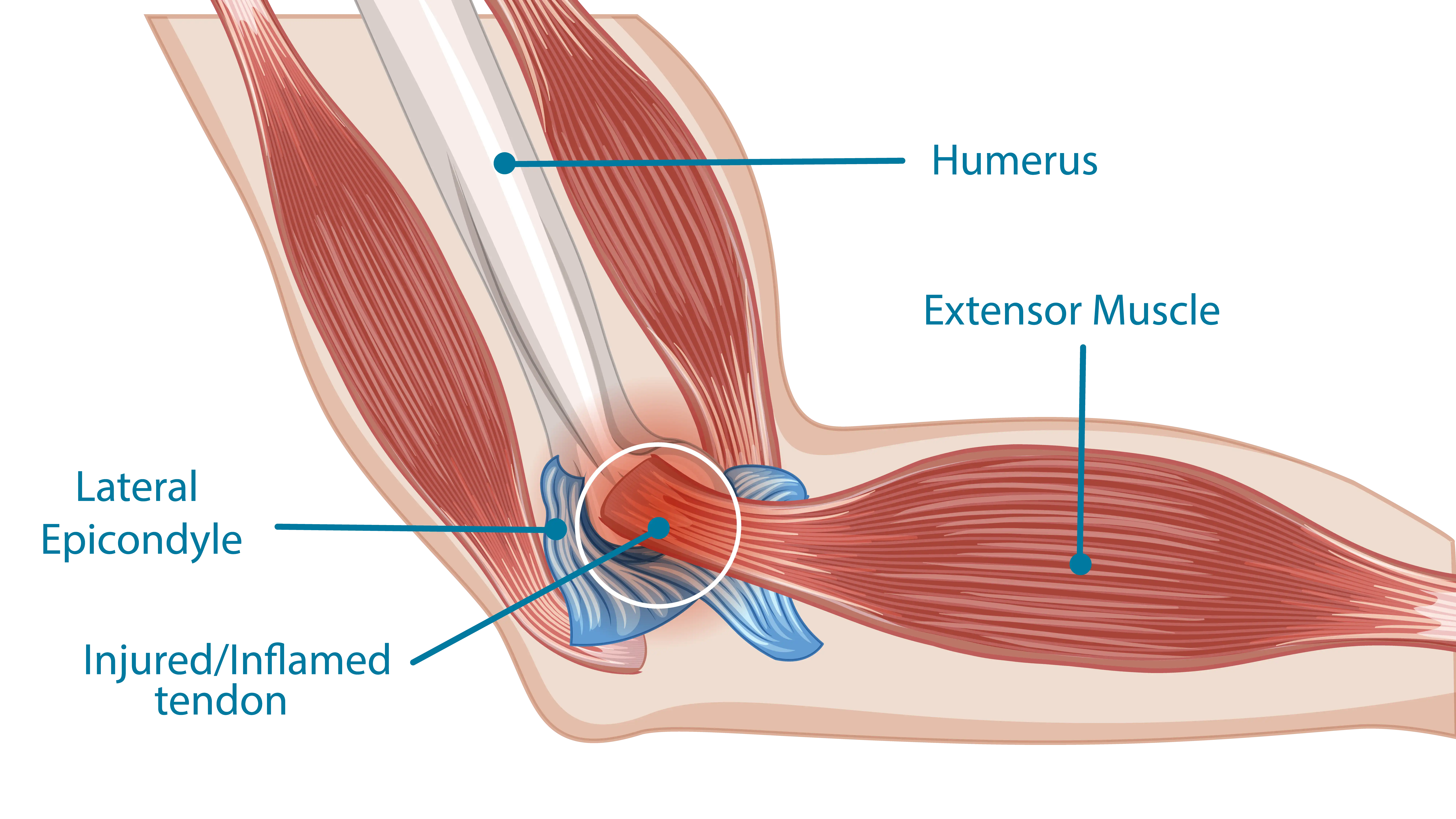Pickleball is one of the fastest-growing sports in the United States, but it can also lead to injuries like shoulder strains, elbow tendinitis, and wrist sprains. In this post, we’ll take a closer look at common pickleball injuries and provide information on how to treat and prevent them.
Key Takeaways
- Shoulder injuries are common in pickleball, often caused by repetitive motions and improper technique. Falls on the pickleball court are common because of the small space and the rapid changes in direction, and can lead to rotator cuff tears of the shoulder.
- Pickleball elbow, a type of tendinitis, can arise from repetitive use and poor form; focusing on technique and gradually increasing playtime are key prevention strategies.
- Injuries to the hand and wrist can result from falls and technique issues; strengthening exercises and proper grip support prevention.
Shoulder Injuries in Pickleball
Shoulder injuries are among the most common pickleball injuries, often resulting from repetitive overhead motions and improper technique during play. These injuries can range from muscle strains to shoulder impingement, labral tears, biceps tendinitis, and rotator cuff tears.
While symptoms vary for each condition, they may include shoulder pain during movement, weakness, stiffness, and clicking sounds or sensations in the shoulder joint. Additionally, players may report diminished performance when playing.
One of the primary causes of shoulder injuries in pickleball is the repetitive movements involved in the swinging motion, especially during forceful strokes. Improper technique may significantly increase the stress on the shoulder joint.
Strategies to reduce your risk:
- Engage in a dynamic warm-up before play to increase blood flow and activate muscles.
- Use equipment that fits your grip and play style to reduce unnecessary strain.
These steps can help players stay active while lowering the chance of shoulder injuries.
Pickleball Elbow
Pickleball elbow, more commonly known as “tennis elbow” or lateral epicondylitis, is a form of tendinitis. This common injury results from repetitive motion and may be linked to improper technique. Symptoms may include pain and soreness in the elbow, and loss of grip strength.

Immediate treatment for pickleball elbow can include rest, bracing, and applying ice to minimize inflammation and reduce pain. Physical therapy may also be recommended to rehabilitate the elbow using targeted exercises and stretching. In some cases, platelet-rich plasma (PRP) therapy may be a regenerative treatment used to promote healing in the area.
Prevention strategies for pickleball elbow include:
- Focusing on proper technique
- Gradually increasing playtime to prevent overuse injuries
- Strengthening exercises for the forearm muscles
Hand and Wrist Injuries
Hand and wrist injuries are frequent among pickleball players. These injuries range from sprains to bone fractures, often resulting from falls or collisions on the court. Repetitive swings and striking motions can also lead to wrist injuries like tendinitis or tears of a shock absorbing tissue of the wrist called the triangular fibrocartilage complex, or TFCC.
Depending on the injury, symptoms may include pain, swelling, stiffness, and weakness in the hand and wrist.
Preventive measures include the following:
- Strengthen hand and wrist muscles to improve stability.
- Maintain proper grip and paddle positioning.
- Stay alert during play to avoid collisions.
Preventive Measures for Pickleball Injuries
Adopting preventive strategies can help many players enjoy the game with less risk of injury. In the following subsections, we will delve into specific preventive strategies, including:
- Warm-up and stretching techniques
- Proper equipment
- Staying hydrated
- Regular exercise
- Knowing your limits
These strategies collectively help prevent injuries and may enhance overall performance for pickleball players.
Warm-Up and Stretching
Implementing a warm-up and stretching session is an important step to prepare the body for the physical demands of pickleball.
Warming up properly is generally recommended to get the body ready for the quick movement required in pickleball. Stretching muscles after a pickleball game helps players maintain flexibility. This simple yet effective practice supports players in giving their best performance on the court.
Use Proper Equipment
Proper equipment is another important preventive measure to help avoid pickleball injuries. Comfortable and supportive shoes provide good foot and ankle support for quick starts and stops. The right type of paddle can also help in minimizing the incidence of elbow injuries. This investment in the right gear not only enhances performance but also supports player safety.
In addition to footwear and paddles, ensuring that your grip size is appropriate can help prevent excessive strain on the forearm. Small adjustments like these can reduce the risk of injuries and improve overall gameplay.
Stay Hydrated
Proper hydration supports muscle function and endurance, while reducing cramp-related risks. Bring a water bottle to the court and take regular hydration breaks as needed.
Exercise Regularly
Cross-training with activities such as biking, swimming, and walking can help build stamina and balance. Getting into a habit of performing core and lower extremity strengthening and stabilization exercises, as well as working on agility, are generally effective for building leg strength, supporting pickleball gameplay. Incorporating these exercises into your routine prepares your body for the physical demands of the sport.
Know Your Limits
Listening to your body and recognizing fatigue or discomfort helps prevent overexertion. Knowing your limits and playing within them supports participation with a lower risk of injury.
Treating Pickleball Injuries
Even when taking preventive strategies, injuries can happen. One common treatment across various conditions is physical therapy, which can help treat pickleball injuries by improving mobility and reducing pain.
Physical therapists aim to prevent future injuries while helping athletes recover from current ones. Therapeutic exercises can enhance strength and balance, supporting a safe return to the sport.
Other conservative treatments may include nonsteroidal anti-inflammatory drugs (NSAIDs), the RICE (rest, ice, compression, elevation) protocol, and medical equipment like braces or supports. In some cases, if non-surgical treatments fail to provide adequate relief, surgery may become a treatment option.
An experienced orthopedic surgeon can evaluate the injury and help guide the most appropriate treatment plan for you.
Summary
Understanding and preventing common pickleball injuries is helpful for anyone looking to enjoy this rapidly growing sport safely. By implementing preventive measures such as proper warm-ups, using appropriate equipment, staying hydrated, exercising regularly, and knowing personal limits, players can reduce their risk of injuries.
However, injuries do happen, and when they do, consider seeking medical evaluation for a personalized treatment strategy. By staying informed and taking proactive steps, pickleball enthusiasts can continue to enjoy the game while maintaining their health and well-being.
Frequently Asked Questions
What are the most common pickleball injuries?
Common pickleball injuries include shoulder injuries, pickleball elbow, and injuries to the hand and wrist. It’s important to take preventive measures to help protect these areas while playing.
How can I prevent shoulder injuries in pickleball?
To help prevent shoulder injuries in pickleball, engage in dynamic warm-ups, utilize appropriate equipment, and focus on proper technique during play. These practices may reduce your risk of injury.
What is pickleball elbow and how is it treated?
Pickleball elbow is a type of tendinitis resulting from overuse of the elbow muscles. Non-surgical treatment options include a combination of rest, ice, and physical therapy.
Why is proper equipment important in pickleball?
Proper equipment in pickleball is often helpful for minimizing injury risks and improving overall performance. Using supportive footwear and an appropriate paddle allows players to play safely and effectively.
How does physical therapy help with pickleball injuries?
Physical therapy may support recovery from pickleball injuries by enhancing mobility, alleviating pain, and implementing targeted exercises to prevent future injuries.

